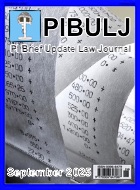Book Review: 'Writing Medico-Legal Reports in Civil Claims: An Essential Guide' by Giles Eyre and Lynden Alexander - Reviewed by Aidan Ellis, Temple Garden Chambers

07/03/13. I will admit that, like the authors of this book, on occasions in the last year I have been dissatisfied with the state of the medical evidence in personal injury claims. It is never straightforward to translate a vaguely expressed prognosis into a detailed Schedule of Special Damages, or to explain a poorly expressed acceleration period to a disbelieving lay client. In my experience the source of the problem is often that the expert does not understand what information the lawyer needs from the expert. Hence a short conference can achieve the desired result. This suggests that the authors of this book have hit the nail on the head, when they identify the need to “improve medico-legal communication”.
They set about this task by beginning with an introduction to civil litigation, which aims to educate medical experts on civil procedure, the role and duties of expert witnesses and, most importantly, the type of legal issues that arise in personal injury cases. This information is always presented in a practical context, and the authors are careful at all times to spell out what the information gained from the medical report is likely to be used for.
The authors then tackle some specific problem areas. I went straight to the section on acceleration and exacerbation cases, because I have often grappled with medical reports in which there is no clear quantification of the amount of exacerbation or no clear basis for the period of acceleration. Here the authors explain clearly, with the aid of diagrams, what is meant by the different terms and the effect that they each have on the calculation of damages. They also identify how the expert should express their conclusions and the reasoning underlying them, in a manner which will help the lawyers to assess the level of damages. I can think of a number of medical reports which would have been improved had the expert heeded this advice. Another helpful section deals with multiple accidents. Where the Claimant has the misfortune to sustain injuries in more than one accident, in the absence of a medical report which considers the right issues it can be impossible to value the various claims. The authors provide a helpful guide to the possible scenarios, and the different issues that the medical expert needs to address in each of them. Of course, this guidance is equally important for lawyers to bear in mind in drafting the instructions to the expert.
There is a wealth of practical guidance here for medical experts. For instance, the sections on how to approach surveillance evidence helps to identify the factors which experts should consider in evaluating the surveillance footage. Similarly, the section explaining the different possible reasons for inconsistencies between what the Claimant says and the contents of their medical records provides a sound starting point from which to go on to consider individual cases. Further the warning that experts may end up being cross-examined on the conduct of their examinations, and the corresponding value of detailed contemporary notes of their observations, is well made.
Practical guidance is also given on writing the report itself, though it is fair to say that this section is likely to be most useful to inexperienced experts. Seasoned campaigners are unlikely to need assistance with the format of the report (particularly where the guidance descends to the detail of the appropriate font size). This holds true for other parts of the book also; whilst experienced experts would still benefit from having some of the core principles reinforced, other sections are likely to be most helpful to those with less experience, including perhaps the questions at the end of each chapter, headed “developing your medico-legal mind”.
Although this book is rightly aimed primarily at medical experts, many personal injury lawyers would also benefit from reading it. Improving medico-legal communication requires engagement from both sides; we cannot lay all of the fault at the door of the medical experts. This book will help lawyers to understand how the medical expert may approach particular issues, which is one step towards getting the best out of an expert. It reminds lawyers of the correct use of medical terminology, such as the difference between “signs” and “symptoms”. As noted above, the guidance on what issues experts must address in particular scenarios is also a useful checklist for lawyers drafting instructions. And there is a wealth of other snippets of information, such as on what supporting evidence needs to be served with a medical report. As a result this is not simply a book for medical experts, but one from which personal injury lawyers could take valuable lessons.
Purchase links:
Amazon
Waterstones
Aidan Ellis











![Appeal judge rules that credit hire company has no costs liability following a finding of fundamental dishonesty in personal injury case: RSA v. Fastrack Solutions Limited [2023] 4 WLUK 92 - David Bowden, Erimus Chambers](/content/images/resized/images/stories/carkeys_72_72.jpg)


